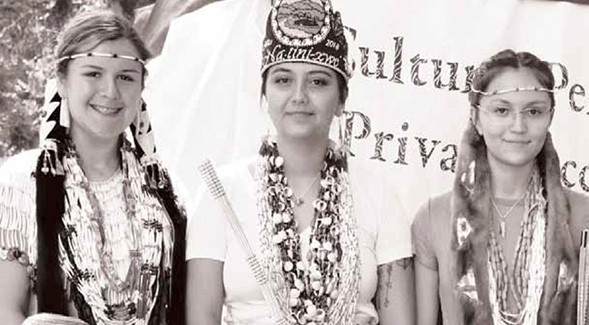Report: Native Americans Suspended at Disproportionate Rates, Recommendations Offered
Researchers, including those from SDSU, are calling on California schools to adopt policies and practices to reduce the disproportionate number of suspensions among Native American youth.

The state-level school suspension rate among Native American children and youth is more than twice the average in California, presenting inequities in the treatment of and outcomes for Native American youth in California, according to a new report.
San Diego State University researchers worked with the Sacramento Native American Higher Education Collaborative (SNAHEC) to co-author the study, “Suspensions and Expulsions of Native American Studies in California Public Schools,” published today. The report also presents a series of solutions to mitigate the disproportionate suspension rates among Native American youth.
“The data shows that Native students, particularly Native boys are not being served by our educational system,” said J. Luke Wood, SDSU’s Chief Diversity Officer and Distinguished Professor of Education, and one of the co-authors on the report.
“These aren’t just bad numbers, these are stories of pain and it needs to stop. As educators and community members, we should all be ashamed at the lack of attention to this issue and action to address these disparities,” Wood said.
A joint publication of the SNAHEC and SDSU’s Community College Equity Assessment Lab (CCEAL), researchers, including graduate student Mohamed Abdi, evaluated California Department of Education data on school suspensions.
“The report shows that little has changed in the way that Native people have been assimilated and excluded from education,” said Molly Springer, Dean of Engagement and Completion at Sacramento City College and co-author of the report. “When they’re repeatedly excluded from the classroom, Native youth are being told that they are not good enough, that they don’t matter, and they aren’t welcome in school.”
The team’s analysis found:
- The statewide suspension rate for Native American children and youth is 7.2%, higher than the statewide suspension average of 3.5%.
- Kings County was the top expulsion county for both Native American boys and girls, with boys being more than 40 times more likely to be expelled than the statewide average; the rate is 20 times higher for girls.
- Native American girls were suspended at a rate of 4.6%; Native American boys were suspended at a rate of 9.6%.
- Native American boys are expelled at a rate 4.2 times higher than the state average, representing the highest expulsion rate for any racial or ethnic or gender group; that rate is steadily increasing.
The team also found that early childhood education (kindergarten through third grade) is a time when much of the suspension disparity appears. During that time, Native American boys are 2.5 times more likely to be suspended than boys in the same grade-range. That rate is 3.7 times greater for Native American girls in comparison to their peer group.
But the highest percentage of suspensions overall occurs while students are in middle school, the team reported. During that time, Native American boys are suspended at a rate of 16.5%, while Native American girls are suspended at 9.1%.
“This groundbreaking report exposes the dramatic inequities in the treatment of and outcomes for Native American youth in California,” the authors wrote in the report, indicating that the team also included the narratives of Native American students speaking about their experiences. “All these data points highlight the ways in which Native American youth in California are criminalized and held back from achievement in our state’s educational system.”
The team generated qualitative case study data to contextualize quantitative data provided by the state. Overall, the team found and reported that qualitative insights demonstrated that Native American children reported excessive punishment and being singled out for punishment, and were at times suspended when they reported being bullied or stereotyped.
The research team calls on school and school districts to implement a number of solutions, namely to:
- Provide training in partnership with tribal nations for K-12 teachers, educators and administrators to help generate understanding about the lives and experiences of Native American studies.
- Introduce culturally aware processes as part of the review for suspensions, which would consider cultural beliefs and values. Such a process would serve to uncover held biases.
- Collaborate with parents, families and tribal officials to discuss issues that may lead to suspensions and expulsions before engagement with law enforcement.
- Involve Native American students in discussions at school about policies and practices that may implicate them.
- Adopt a restorative justice practice when managing disciplinary issues, which calls for conversation and compassion rather than a punitive and purely bureaucratic approach.
- Create memoranda of understanding between school districts and local tribes, allowing tribal nations information and data related to suspensions and expulsions and also other practices.
“These strategies are gleaned from extant research on promising practices for reducing exclusionary outcomes for minoritized youth,” the report’s authors noted, “and from our own experiential knowledge as educators, activists, and those who have navigated these experiences with our own children.”



